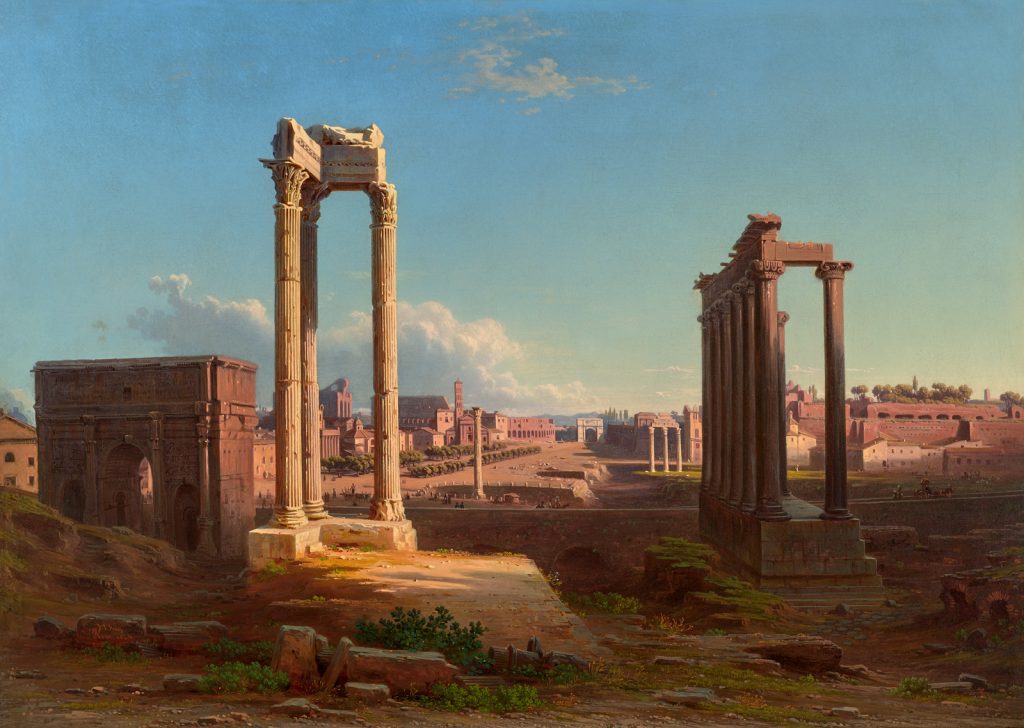Johann Jakob Frey
(Basel 1813 - 1865 Frascati)
Panorama of the Forum Romanum, 1859
Oil on canvas, 78 x 56 cm
Signed and dated lower left: J.J. Frey, Anno 1859
Provenance:
German private collection
When Johann Jakob Frey executed this elaborate panorama of the Forum Romanum in 1859 he was already an established figure in his adopted city of Rome.
He began his training in Basel as an apprentice to his father Samuel Frey and went on to study under the history painter Hieronymus Hess (1799-1850). After moving to Paris he earned a living as a lithographer and restorer of paintings. On a visit to Munich in 1834 he met the Swiss painter and patron Emilie Lindner who introduced him to Friedrich Overbeck, Clemens Brentano and Friedrich Wilhelm Joseph Schelling. With Lindner’s patronage he was able to visit Rome in 1835. Here he befriended prominent cultural figures such as the landscape painters Joseph Anton Koch and Johann Christian Reinhart.
Frey undertook excursions to Naples and explored Sicily and Spain. In 1842, he accompanied an archaeological expedition to Egypt sponsored by the Prussian government. He was charged with creating an artistic record of the landscapes and architecture seen on the journey. He returned to Rome in August 1843, where he settled and married. His links with German cultural and artistic circles strengthened and he enjoyed increasing financial success. Ruling monarchs and wealthy patrons beat a path to his door. He received a commission for a series of Italian landscapes from Friedrich Wilhelm IV of Prussia (1795 – 1861).[1]
The panorama became increasingly popular as a pictorial genre in painting over the course of the nineteenth century. This was largely a consequence of the growing competition between photography and landscape painting. It prompted veduta painters to exploit compositional possibilities that were unavailable to photographers, such as the use of extreme lighting and powerful contrasts for dramatic effect, and subtly reconfigured, in reality barely discernible architectural elements which could be accentuated by exaggerating or shrinking their proportions.
Like a cicerone, Frey’s Panorama focuses on the most important monuments in the Forum Romanum. The Arch of Septimius Severus, the Temple of Vespasian and the Temple of Saturn are moved forward as repoussoir elements. Between the two temples the view sweeps over the Column of Phocas towards the Arch of Titus in the distance. On the left in front of the Colosseum is a tightly grouped complex of buildings - the Church of Santa Maria Nova, the Temple of Romulus, the basilica of Santi Cosma e Damiano and the church of San Lorenzo in Miranda. On the right are the three columns of the Temple of Castor and Pollux and the substructures on the western slope of the Palatine with the imperial palaces.
- Pier Andrea De Rosa, Johann Jakob Frey 1813 – 1865. Nove inedita dipinti/ Nine unpublished paintings, Rome 2017, pp. 23-38.

